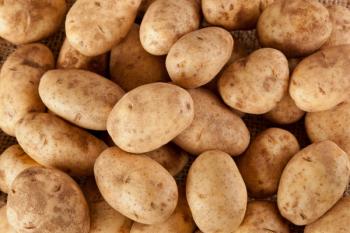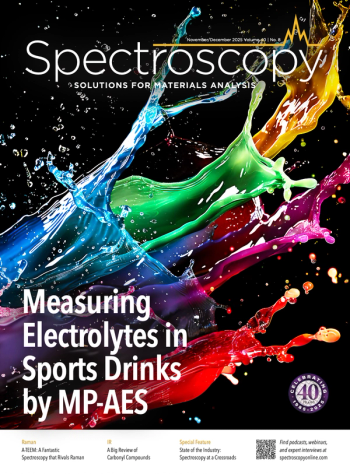
- Advances in Infrared Spectroscopy for Today’s Spectroscopists
- Volume 39
- Issue s8
- Pages: 16–18
Examining the Cheese Ripening Process with Mid-Infrared and Synchronous Fluorescence Spectroscopy
A joint French-Canadian study examined the ripening process of commercially popular Comté and cheddar cheeses, which are widely consumed in those countries, utilizing mid-infrared (mid-IR) and synchronous fluorescence spectroscopy (SFS) in their analysis.
The process of cheese ripeningentails a series of biochemical reactions, culminating in the development of distinct sensory attributes which make the results highly desired as a delicacy. A joint French-Canadian study examined the ripening process of commercially popular Comté and cheddar cheeses, which are widely consumed in those countries, utilizing mid-infrared (mid-IR) and synchronous fluorescence spectroscopy (SFS) in their analysis. Christophe Cordella, a professor in the Department of Food Sciences at Laval University, Quebec, Canada, is the lead author on a paper that resulted from this work. Cordella spoke to Spectroscopy about his group’s efforts and the findings of their research.
Your paper (1) offers a multimodal spectroscopic and scanning electron microscopy investigation of monitoring cheese ripening. What inspired this research?
The Quebec industrial sector is constantly seeking to improve the quality of its products, particularly in the field of cheese manufacturing. The strong links between France and Quebec in agrifood and gastronomy make this sector very dynamic, because it is of major cultural importance.
You performed your analyses on cheddar (aged for four different amounts of time) and Comté cheeses (aged for three different amounts of time). Why did you use these types?
The answer to this question is linked to the first. The gastronomic cultural links between France and Quebec led us to choose these two types of cheese, one being more Quebecois and the other more French. Furthermore, cheddar is a soft cheese and Comté is a hard cheese, which leads to different maturation processes that we wanted to study and compare.
You state in your paper that analyzing the cheese matrix presents a significant challenge due to its inherent complexity. Can you explain this statement? What specific complexities make the process such a challenge?
The complexity of cheese stems from the diversity of its chemical components, its physical structure, and the biochemical interactions occurring within it.
Cheese is composed of a multitude of substances, such as proteins, lipids, carbohydrates, minerals, and water, with each component having distinct properties and behaviors. For example, milk proteins, like caseins and whey proteins, form complex networks that interact with lipids to create the characteristic texture of cheese. The lipids themselves, present as triglycerides and phospholipids, can influence water diffusion and aroma release, adding another layer of complexity.
Additionally, the water content in cheese varies considerably, affecting the distribution and availability of other components. Carbohydrates, though present in smaller amounts, play a crucial role in fermentation and maturation, contributing to the formation of volatile compounds responsible for aromas and flavors.
We could also talk about the minerals that play a role in the structure of proteins. Besides these chemical factors, the physical structure of cheese, which can range from smooth and creamy to firm and granular, depends on manufacturing and maturation processes. These structures influence physicochemical analyses and the release of volatile compounds.
Other parameters, such as the variability of the raw materials and production conditions, also contribute to the complexity of the cheese matrix. Finally, biochemical interactions between enzymes and microorganisms present in cheese contribute to the dynamics of its maturation, making the prediction and control of its final properties particularly difficult. These combined elements explain why the analysis of the cheese matrix remains a complex field requiring advanced and multidisciplinary analytical approaches.
What are the benefits of using mid-infrared (mid-IR) and synchronous fluorescence spectroscopy (SFS) in your research?
My research group at the Laboratory of Research and Treatment of Chemosensory Information (LARTIC) is developing rapid and, if possible, non-destructive analytical approaches for food analysis. Through the collected data, we study the relationships between the physicochemical and sensory properties of food, seeking strong links between these properties and human perception. In the case of cheeses, our goal is to gain a better understanding of the cheese maturation process to help manufacturers more easily monitor and control their production. Additionally, this work provides us with valuable data to model what is called the machine sensory space and the human sensory space, with the aim of bridging the two using mathematical tools.
To achieve this objective, spectroscopic techniques, such as infrared spectroscopy or front-face fluorescence spectroscopy, are particularly suited for producing chemical fingerprints that feed into our chemometric models.
You mentioned in the paper that you were not aware of other researchers performing similar work. Why do you think this is the case?
While we know, of course, of several research teams working on the cheese matrix, they mainly work on understanding the biochemical mechanisms which lead to the maturation of cheeses and the release of aromas. Others are interested in the importance of bacterial microflora on the aromatic orientation of the finished product. Still, others are specifically interested in sensory aspects.
Our approach aims to determine whether it is possible to predict human sensory perception from spectroscopic and chromatographic data collected on the samples. Usually, it is common to try to predict a sensory note from a physicochemical analysis, but predicting what the taster will feel from physicochemical or spectroscopic data is much less common. This is our goal in the work we carry out at LARTIC.
Were there any particularly interesting findings that stand out due to the type or age of the cheese analyzed?
We cannot report on any fundamental discoveries here, but we did discover the demonstration of a very simple link to make between the structuring of matter, and, in particular, the increase in the size of fat globules and their self-organization into fine microstructures during the maturation process, as well as the spectroscopic signals recorded in infrared and fluorescence.
We have shown in this research work that analysis using light could lead to very precise monitoring of the maturation process, and we have illustrated this directly by taking microphotographic images. All our measurements correlate very well with maturation time.
Are there any other findings you’d like to share?
We are completing a new article based on these results which will show the links we can make between the spectroscopic and chromatographic data and the sensory attributes evaluated on these cheese samples by tasters. We were able to show that there are very good correlations between what the instrumental data tell us about the structuring of cheeses over time and how the sensory perception of tasters evolves. We are approaching our objective, which is to predict perception (based on a selection of sensory attributes), knowing the spectroscopic or chromatographic fingerprint of the samples.
Were there any limitations or challenges you encountered in your work?
Not having a specific industrial financial support for this research work, we wanted total freedom of action. Our main difficulty was the supply of samples and the management of production batches with exact traceability of the commercial samples used.
We worked in real conditions, and we were not able to control everything about the origin and manufacturing of the samples. Despite this handicap, our results turned out to be satisfactory.
What best practices can you recommend in this type of analysis for both instrument parameters and data analysis?
The recommendations for spectroscopic analyzes are classic, and there are no additional difficulties linked to the cheese matrix. In general, it is necessary to work with precision and cleanliness, all while controlling the temperature conditions of the samples, particularly for frontal-face fluorescence spectroscopy. We worked with sample holders designed to always present the same thickness of cheese and similar surfaces. Concerning infrared, the quality of the background produced on the air is important so as not to distort the original spectra too much. Finally, on the chemometrics side, it is always wise to seek to build the least complex independent component analysis (ICA) models possible, which can be done by looking for the smallest possible number of components while having the best possible signal extraction. It’s a matter of compromise, as always.
Can you please summarize the feedback that you have received from others regarding this work?
We are in a communication process with manufacturers. We will present these results soon at various conferences where manufacturers will be.
Do you imagine these techniques to be adaptable to other foods, specifically other dairy products?
Of course, completely, but I can’t tell you more yet; all I can say is that we are working on butter, bread, and maple syrup.
What are the next steps in this research?
Collect data and cumulate to build larger databases.
References
(1) Abi-Rizk, H.; Bouveresse, D. J-R.; Chamberland, J.; Cordella, C. B. Y. Chemometrics-Driven Monitoring of Cheese Ripening: A Multimodal Spectroscopic and Scanning Electron Microscopy Investigation. Anal. Meth. 2024, 16, 3732–3744. DOI: 10.1039/D4AY00609G
Articles in this issue
Newsletter
Get essential updates on the latest spectroscopy technologies, regulatory standards, and best practices—subscribe today to Spectroscopy.



